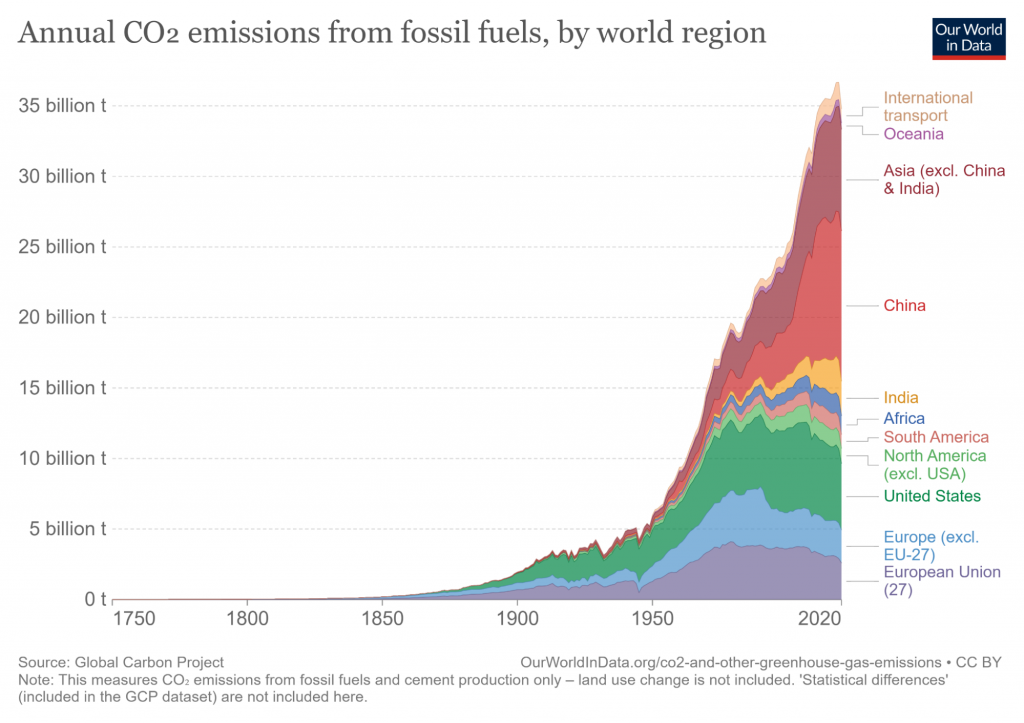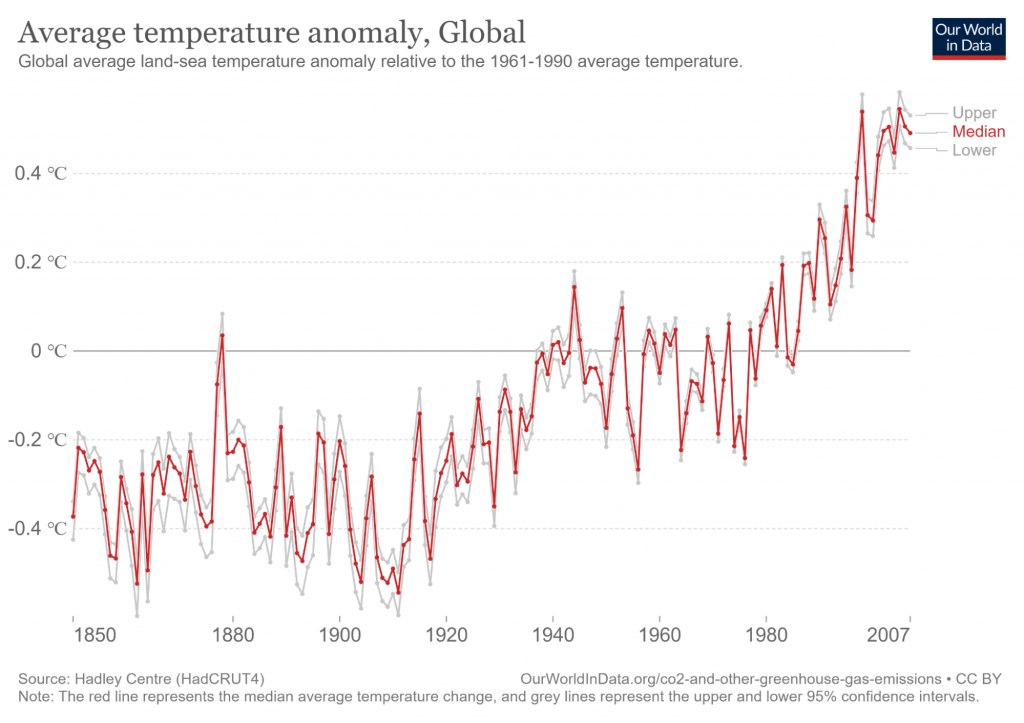Every major environmental protection agency across the world, including the United Nations, is looking to find solutions to tackle climate change. They have also repeatedly said that countries need to reduce 55% of their greenhouse gas emissions by 2030 to avoid the worst impacts of climate change. These goals and markers are based solely on country-reported emission estimates and related commitments.
Countries worldwide have been reporting emissions data for decades. However, the lack of accessibility and expertise has created a significant challenge for corporations and governments. Without any expertise to certify the accuracy of emissions being calculated, it can be difficult to obtain accurate results. Simply put, we can’t manage emissions if we don’t know how to measure them.
Before we explain what the GHG API can do for your use case, let’s understand why measuring greenhouse gasses is so important.
What is the greenhouse effect?
The greenhouse effect is a natural atmospheric process that helps keep the Earth at the right temperature for most organic life, including humans, to thrive. Without this mechanism, the Earth’s average temperature would be 33 °C less than it is now.
What are the specific greenhouse gasses?
- Carbon dioxide (CO2) – CO2 is released through natural processes, such as volcanic eruptions, plant respiration, and animals’ and humans’ breathing. CO2 is the main contributor to climate change as it is abundantly available.
- Methane – This GHG is produced through organic decomposition. Cattle farming, landfill waste dumps, rice farming, and conventional oil and gas production are some sectors that release large amounts of methane. Though smaller in overall quantity, methane can be up to 80x as effective as CO2 at trapping heat and generating the greenhouse effect.
- Nitrous oxide – Nitrous oxide is produced through the large-scale use of commercial and organic fertilizers, fossil-fuel combustion, nitric acid production, and biomass burning.
- Water vapor – Water vapor is the most abundant greenhouse gas. It increases as the Earth’s atmosphere warms. Unlike CO2, which can remain in the Earth’s atmosphere for centuries, water vapor persists for a few days.
What are artificial sources of GHGs?
The group of gasses defined above is naturally produced, but their increasing atmospheric concentration is a result of rapid industrialization.
In contrast, the industrial fluorinated gasses – hydrofluorocarbons (HFC), perfluorocarbons (PFC), and sulfur hexafluoride (SF6) – are wholly human-made during industrial processes. Though they are present in very small concentrations in the atmosphere, they trap heat very effectively, meaning they are incredibly potent.
It’s worth noting that different greenhouse gases last in the atmosphere for various lengths of time and absorb different amounts of heat. SF6, used in high-voltage electrical equipment, has a ‘Global Warming Potential’ 23,000 times greater than CO2.
Why should we measure GHGs?
Similar to how a blanket traps the heat a person radiates, greenhouse gases also trap the heat that Earth radiates. Without this mechanism, the Earth’s average temperature would be 33 °C less than it is now.
Greenhouse gases have existed in the atmosphere at relatively stable levels for thousands of years until the industrial processes were developed. After industrialization, the levels of greenhouse gases have risen at an unprecedented rate.

The sudden increase in GHG levels begins to exacerbate the greenhouse effect, pushing it beyond natural levels. This leads to an excess of trapped heat, altering the climate permanently. Scientists & organizations have confirmed that the last seven years have been the warmest in recorded history.

Rising temperatures increase the frequency and intensity of extreme weather events such as heatwaves, floods, etc. We need to reduce our GHG emissions to zero to minimize these climate impacts in the future. The most important step in reducing emissions is knowing how much we add to the atmosphere. To learn more about the greenhouse gasses we are adding to our air, we must first measure them.
Now that we have established the importance of understanding the GHG levels in our atmosphere, let’s talk about how we can actually achieve that. This is how we do it at Ambee.
Ambee’s Greenhouse Gas API
Greenhouse gases freely exist in the atmosphere, and emissions are added to the atmosphere. With Ambee’s GHG API, a user can understand the greenhouse gas levels present in the atmosphere at specific geo-coordinates, in real-time.
Along with global daily coverage of greenhouse gas data, the Ambee API gives detailed information on:
- Carbon dioxide (CO2),
- Water vapor,
- Methane (CH4) and
- Ozone (O3).
How we do it
“We use raw data from multiple earth observational satellites,” says Chandrashekar D, VP of Engineering, Ambee. The process is similar to how Ambee curates its climate and environmental dataset repository. “The raw data from satellites are collected and combined with the insights from Ambee’s devices. These insights are generated from our learnings collected from the proprietary sensors we’ve deployed in cities.”
The proprietary devices Ambee has deployed across various critical locations across Mumbai are the foundation of the research that backs Ambee’s GHG API. Chandrashekar concludes, “with this process in place, we can provide accurate and hyperlocal GHG data on a global scale.”
What can you do with Ambee’s GHG API?
Corporations, institutions, and governments across the globe can use Ambee’s GHG API to implement policies and take measures to reduce their carbon footprint. The data can be used to set GHG reduction targets in different departments. The hyperlocal quality of Ambee’s greenhouse gas API can help sustainability managers assess GHG targets for each department based on their respective functions.
Companies can also assess their climate risks and opportunities with GHG data. The GHG dataset can help businesses track and compare their internal greenhouse gas emissions, identify opportunities to reduce pollution, decrease energy wastage, and save money. Cities and other communities can use Ambee’s GHG API to find areas or points of higher emission, compare insights between similar facilities, and develop unified climate policies.
Almost every industry & sector has applications that require accurate greenhouse gas data. Over the next decade, GHG data will become the single most important data set. Using accurate data helps create science-based insights and make effective decisions, a crucial battle in our war on climate change.
Try Ambee’s GHG API and find out how you can leverage data to make climate-conscious decisions.

A writer, nature lover and an environmental engineer. You can find me at Ambee’s office working with an amazing team to bring about positive change to our planet’s health. Being a big advocate of our environment, I write about technologies like AI, ML and Big data and its potential to save humankind from global warming.




